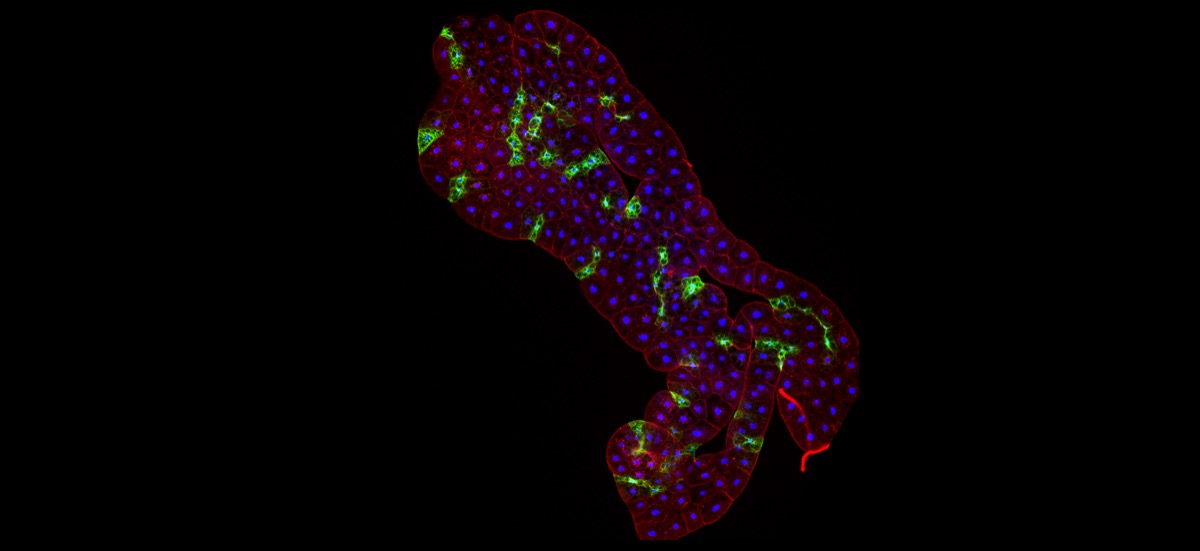A mutant fruitfly strain studied by researchers from the National Centre for Biological Sciences (NCBS), Bangalore, may hold the key to understanding what goes wrong with insulin signalling in type-2 diabetes. When raised on a high-sugar diet, normal flies show a 25% increase in blood sugar levels; but the mutant flies—which lack the enzyme PIP4K (short for phosphatidylinositol 5 phosphate 4-kinase)— have normal blood sugar levels when raised on a high-sugar diet. The research team behind this work believes that PIP4K acts as a ‘molecular rheostat’, downregulating the strength and duration of insulin signalling.
Currently, most diabetics—roughly 500 million people in the world—suffer from type-2 diabetes, which usually occurs when our cells lose their ability to respond to insulin and become ‘insulin resistant’. High blood sugar, a hallmark of this condition, arises because even if insulin is present, it is unable to switch on the cell’s signalling system to take in glucose.
Now, new research on a mutant fruitfly (Drosophila)could help us understand what goes wrong in the insulin signalling system in type-2 diabetes. These mutant flies, which lack the enzyme PIP4K (phosphatidylinositol 5 phosphate 4-kinase), can maintain normal blood sugar levels even when fed a high-sugar diet, whereas, normal flies on such a diet show a 25% increase in their blood sugar levels.
The team of scientists behind this work, led by Raghu Padinjat from the National Centre of Biological Sciences (NCBS), Bangalore, have identified PIP4K as a ‘molecular rheostat’ that dampens the strength and duration of insulin signalling in cells. Their work, supported by NCBS and the Wellcome Trust/DBT India Alliance has been published in a paper in the journal Cell Reports.
“These mutants show metabolic features that are the opposite of what is seen in insulin resistance,” says Padinjat. “This could be really useful in studying insulin resistance, and in developing new treatments for type 2 diabetes,” he adds.
The signalling mechanism triggered by insulin binding to its receptor on a cell relies on many molecular messengers. The production of one of these messengers, PIP3 (phosphatidylinositol 3,4,5-trisphosphate), at the cell membrane is a key event in insulin signalling.
“PIP3 production is limited by PIP4K, which helps fine-tune insulin signalling by acting as a checkpoint during the signalling process. PIP4K functions just like the rheostat in a fan which helps control the fan’s speed,” says Sanjeev Sharma, who is first author in the publication that describes these results.
When PIP4K is absent, not only are higher amounts of PIP3 produced at a faster rate, but the rate at which PIP3 is removed, is also slower. Therefore, insulin signalling lasts longer, and is stronger when PIP4K is absent. Interestingly, this function of PIP4K is not dependent on its enzymatic activity, which is to produce the precursor molecule required for generating PIP3. Instead, PIP4K seems to tweak the activity of another enzyme, PI3K (Class I phosphoinositide 3-kinase), which produces PIP3 during the course of insulin signalling.
When normal Drosophila are fed a high-sugar diet (containing 10 times the amount of sugar in a normal diet), they show multiple signs of stress, including high blood trehalose (insect blood sugar) levels and delayed development. In contrast, PIP4K mutants fed a high-sugar diet maintain normal blood trehalose levels and also experience a shorter developmental delay.
“It’s like they’re partially immune to the metabolic effects of the high-sugar diet,” says Padinjat.
The stark differences between the mutant and normal Drosophila in their responses to a high-sugar diet reveals the link between PIP4K and insulin signalling at a whole-organism level, which has never before been demonstrated.
“Although previous studies on mammalian cells have linked PIP4K to insulin signalling, none could establish a clear connection between the two. This was probably because mammals have multiple types of PIP4K with differing activities. Fruit flies, fortunately, have only one copy of PIP4K, and so our study could bypass the ambiguities that arose in previous studies,” says Sharma.
Padinjat’s team is now focused on teasing out the details of how PIP4K interacts with other components of the insulin signalling pathway.
“We’d also really like to see if our results from fruit flies hold true in humans, and if PIP4K can be developed as a therapeutic target for treating the altered insulin signalling that is a key feature of Type 2 diabetes,” says Sharma.










0 Comments